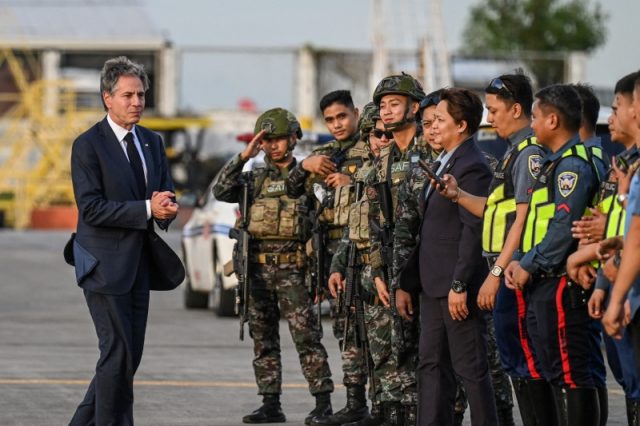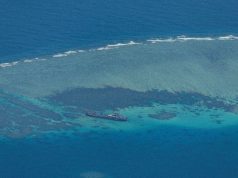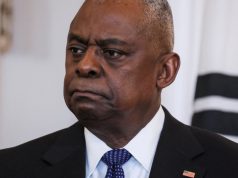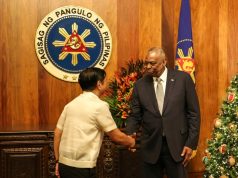
MANILA —The United States on Tuesday pledged funding of $500 million for the Philippines’ military and coast guard in a big show of support for Manila as it faces Chinese actions in disputed waters in the South China Sea.
Secretary of State Antony Blinken and Defense Secretary Lloyd Austin met their Philippine counterparts in Manila to reaffirm Washington’s unwavering commitment to its oldest treaty ally in Asia.
“This level of funding is unprecedented, and it sends a clear message of support for the Philippines, from the Biden-Harris administration, the U.S. Congress and the American people,” Austin said in joint press conference following security talks.
Ahead of their meetings, Blinken and Austin met with President Ferdinand Marcos Jr who has moved the Philippines closer to Washington since he replaced Rodrigo Duterte, who was openly hostile to the Americans and pursued warmer ties with China during his six-year term.
READ: Philippines engagements help with ‘agile’ responses to China, says Marcos
“I’m always very happy that these communication lines are very open so that all the things that we are doing together… are continuously examined and re-examined so we are agile in terms of our responses,” Marcos said.
The Philippines has competing claims with China in the waters to its west also known as the South China Sea. China claims 90% of the sea as its sovereign territory.
Violence broke out after a Filipino sailor lost a finger in a June 17 mission to resupply troops stationed at a contested shoal after what Manila described as “intentional-high speed ramming” by the Chinese coast guard.
Manila reached a provisional arrangement with China for resupply missions this month to ease tensions and manage differences, but the two sides appear at odds over the details of the deal, which has not been made public.
Philippine foreign minister Enrique Manalo said in the same news conference his country agreed to an “exchange of information” under its arrangement with China.
Blinken said the U.S. shares the Philippines’ concerns about “escalatory” actions China has taken in the South China Sea.
Countering China
Blinken also reaffirmed Washington’s “ironclad” commitment to the defend the Philippines against an armed attack on its vessels, aircraft and soldiers in the waterway.
A 2016 ruling by the Permanent Court of Arbitration in the Hague found that China’s claims had no basis under international law. The case was brought by the Philippines and China rejects the court ruling.
The meetings in Manila follow talks between Blinken and Austin and their counterparts in Japan, another key U.S. ally in East Asia, where they announced an upgrade of the U.S. military command in Japan and labelled China the “greatest strategic challenge” facing the region.
Blinken also met on Monday with foreign ministers from Australia, India and Japan, a grouping known as the Quad, and decried China’s actions in the South China Sea.
READ: US concerned about China’s escalatory actions in South China Sea, Blinken says
He met Chinese Foreign Minister Wang Yi in Laos on Saturday and criticized Beijing for actions regarding Taiwan and the Philippines. He told Wang “China must uphold its commitments to not obstruct the Philippines in their resupply missions,” he said.
China’s foreign ministry hit back at Washington and Tokyo, for attacking what it called China’s “normal military development and national defence policy” and accused the Quad of “artificially creating tension, inciting confrontation and containing the development of other countries”.
The Pentagon has also proposed spending $128 million on infrastructure improvements at Philippine bases accessible to U.S. forces. There are now nine sites, including three in the north that are seen as important in the event of China invading Taiwan, and one facing the South China Sea.
—Reporting by Simon Lewis and Karen Lema; Additional reporting by Mikhail Flores and Neil Jerome Morales; Editing by Raju Gopalakrishnan and Angus MacSwan









